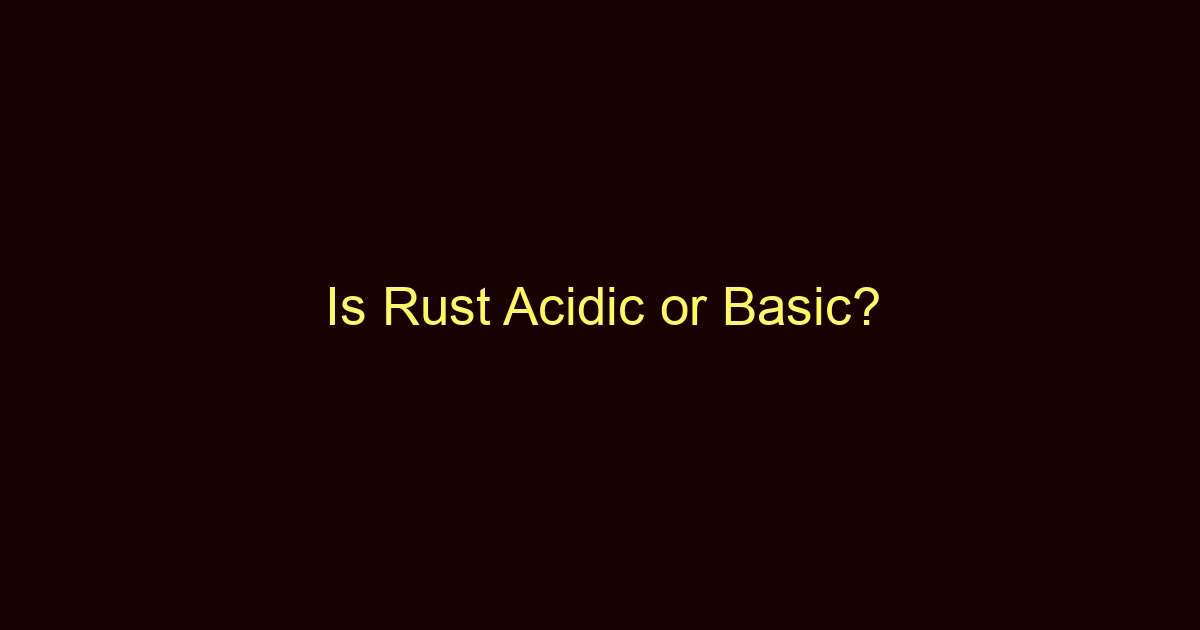Rust is acidic in nature. It forms due to the oxidation of iron in the presence of water and oxygen, often accelerated by acids and salts.
Rust, a reddish or yellowish-brown flaky coating of iron oxide, emerges when iron or its alloys corrode. Iron corrodes when exposed to water and air, more quickly in the presence of acids or salts. But how does this relate to acidity or alkalinity? Read on as we explore whether rust is acidic, basic, or perhaps somewhere in between.
Is Rust Acidic?
Yes, rust is acidic. Rust forms when iron reacts with oxygen in the presence of water. This process is called oxidation and results in the creation of iron oxides, which are acidic in nature. Acidity speeds up the rate of corrosion, making acidic conditions more favorable for rust formation. For example, salty water, which is acidic, can accelerate rusting in iron and steel objects.
While it’s true that rust itself is acidic, the situation is a bit more complex. Various environmental factors contribute to the speed at which rust forms. In places with high humidity and acidic conditions, rust formation is significantly faster. Acid rain, for instance, exacerbates rusting because it offers both water and a lower pH level, speeding up the corrosion process.
Rust’s acidity is also why you’ll see it have a harmful impact on plants, soil, and even concrete over time. The iron oxide leaches into the soil, making it more acidic, which can be detrimental for plant growth and cause degradation to concrete structures.
Is Rust Basic?
No, rust is not basic. Rust is inherently acidic, not basic. It’s a common misconception that rust could be basic due to the presence of metal, but that’s not the case. When iron corrodes, the resulting iron oxide has acidic properties, not basic ones.
The idea that rust might be basic usually stems from a misunderstanding of its formation process. The corrosion that leads to rust is actually an electrochemical reaction that involves the transfer of electrons. It does not result in the creation of a base. In fact, basic environments like alkaline water can slow down the rate of rust formation to some extent.
Given that rust is acidic, treating it often involves neutralizing its acidity. Alkaline solutions can sometimes be used to clean or treat rusted surfaces, further demonstrating that rust is not basic but acidic in nature.
pH Values of Rust
When it comes to pH values, rust typically displays a low pH, indicating its acidic nature. pH is a measure of the acidity or basicity of a solution. Acidic solutions have a pH less than 7, while basic solutions have a pH greater than 7. Rust will typically have a pH that is below 7 due to the acidic iron oxides that constitute it.
Final Thoughts
Rust is a fascinating, albeit often unwanted, phenomenon that primarily occurs due to the oxidation of iron. Its acidic nature speeds up in conditions that are already acidic, like in the presence of saltwater or acid rain. It’s a self-perpetuating cycle: more acidic conditions lead to more rust, which in turn further acidifies its environment.
Contrary to some misconceptions, rust is not basic. Alkaline environments can slow down its formation, but they do not change its inherent acidic properties.
Understanding the pH of rust is crucial for many industries, from construction to agriculture. Knowing that rust is acidic allows for more effective prevention and treatment, ultimately saving both time and resources.

